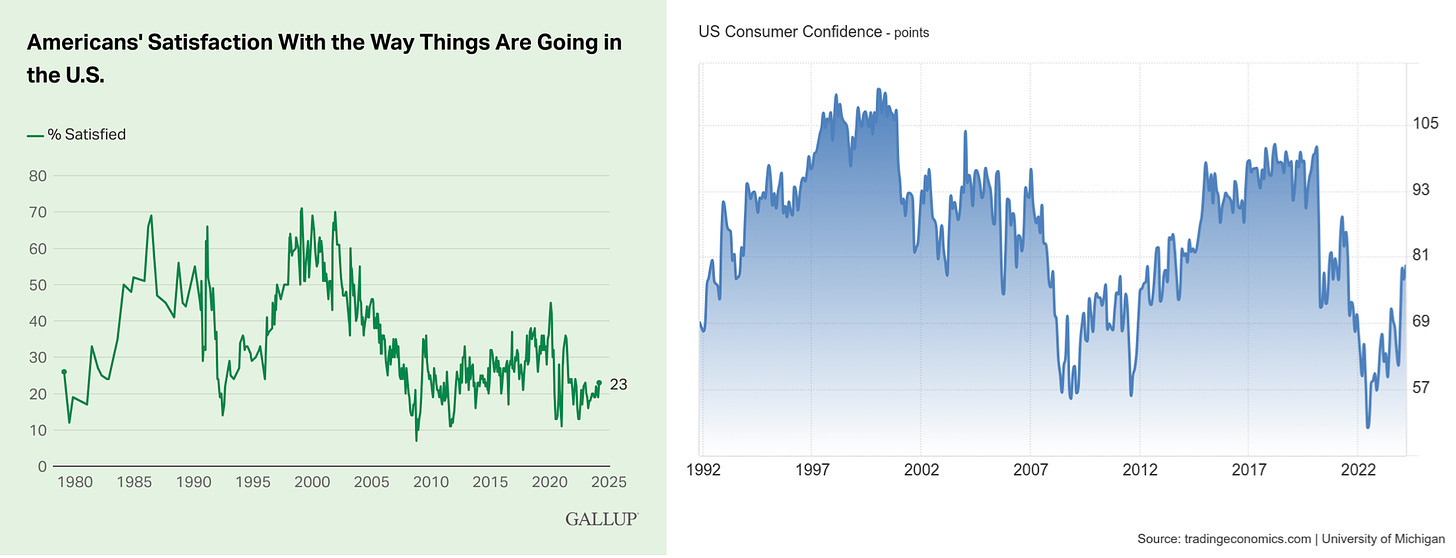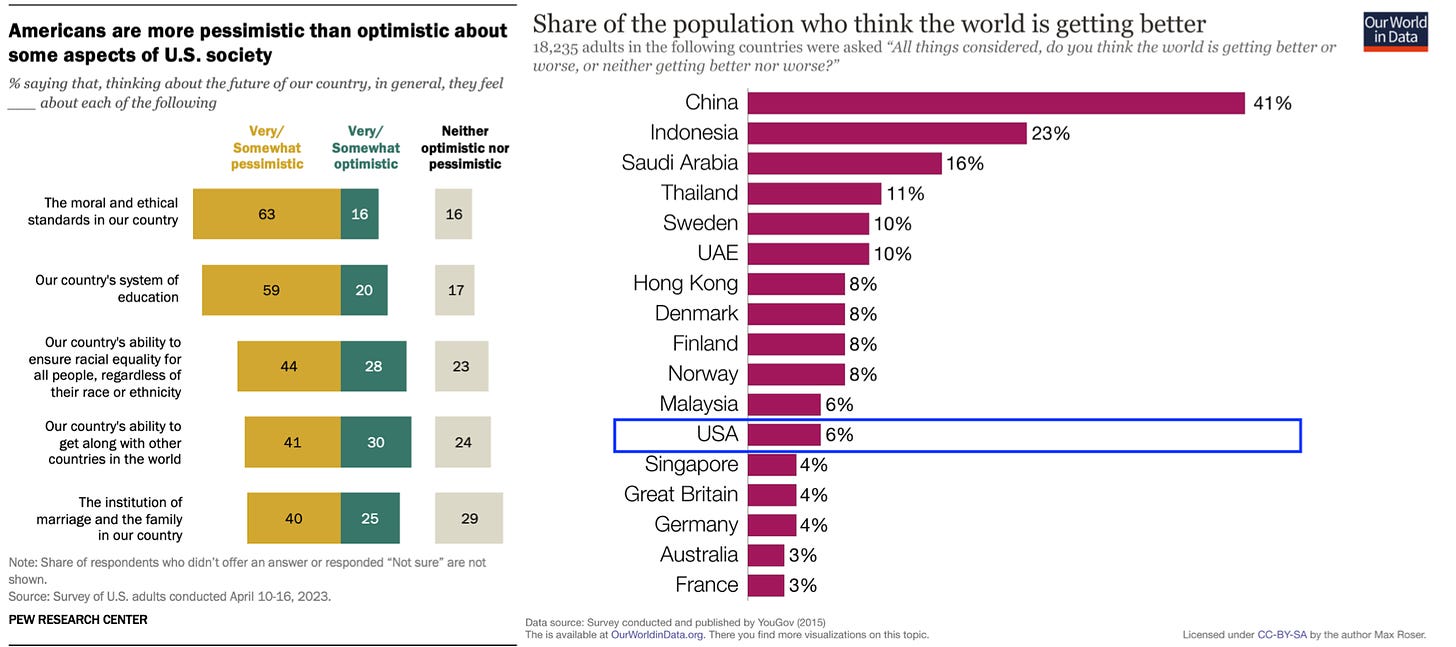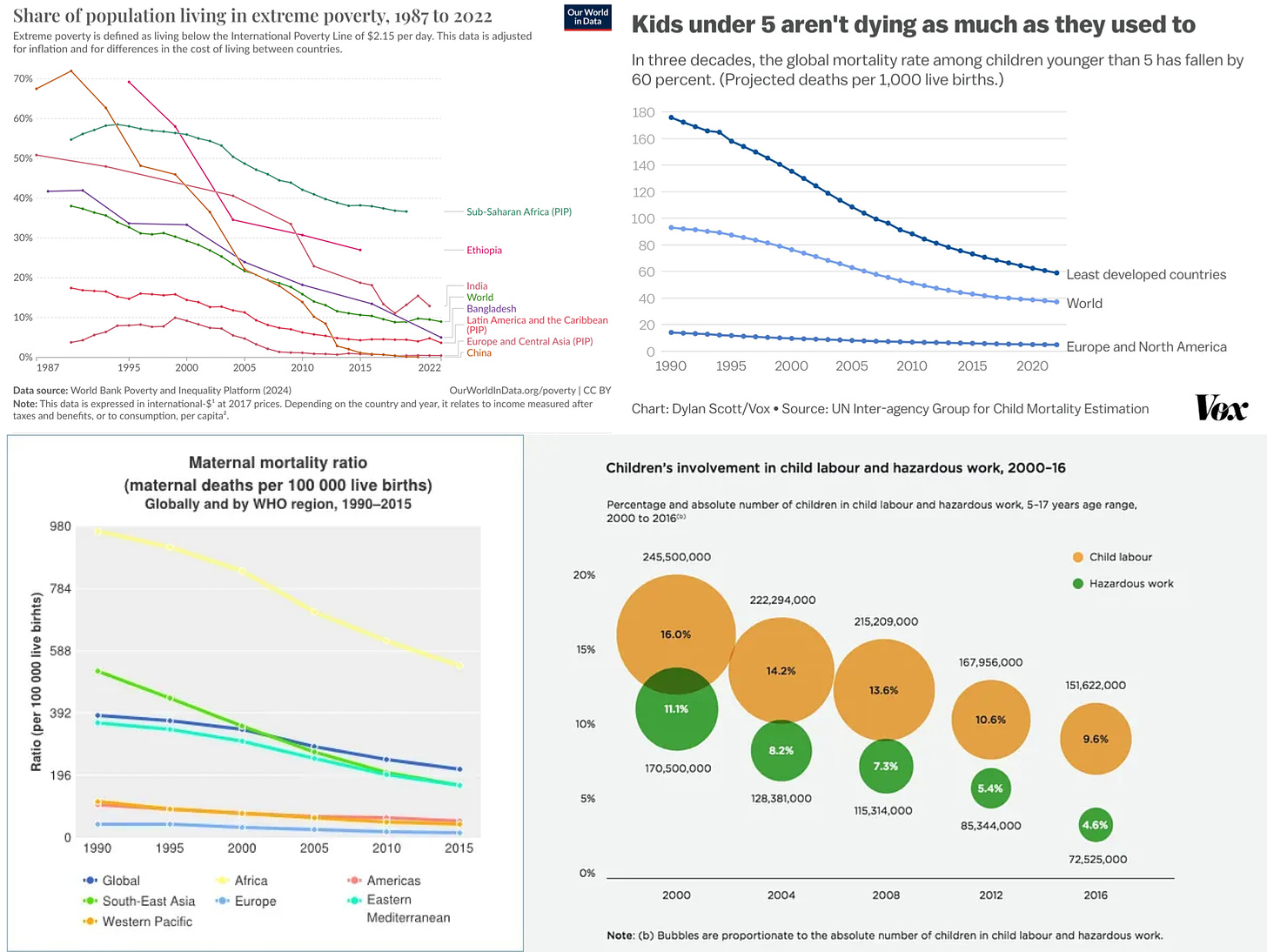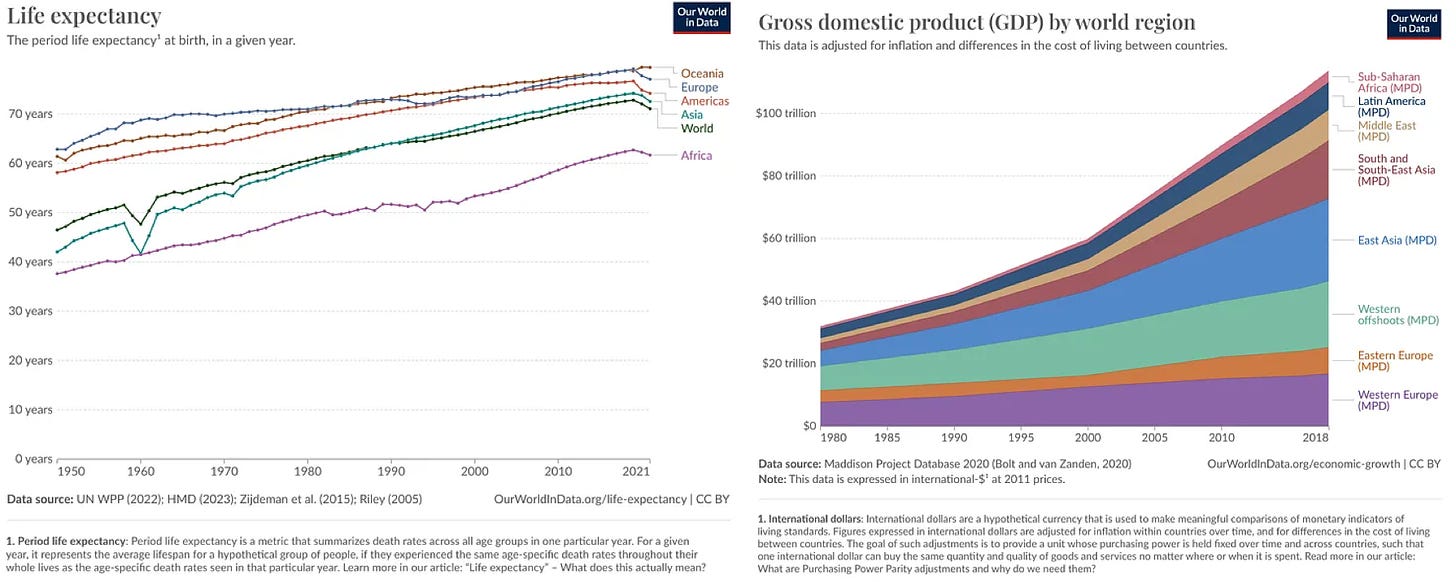From Stranger Apologies, "A blog about why people are more rational than you think" May 11 [I don't know what you think, so just want to point out that's his descriptor, not mine]:
Why public discourse should be negative even when things are going well
TLDR: Things seem bad. But chart-wielding optimists keep telling us that things are better than they’ve ever been. How to explain this gap? Hypothesis: the point of conversation is to solve problems, so public discourse will focus on the problems—making us all think that things are worse than they are. A simple computational model predicts both this dynamic, and that social media makes it worse.
Are things bad? Most people think so.
Over the last 25 years, satisfaction with how things are going in the US has tanked, while economic sentiment is as bad as it’s been since the Great Recession
Meanwhile, majorities or pluralities in the US are pessimistic about the state of social norms, education, racial disparities, etc. And when asked about the wider world—even in the heady days of 2015—a only 6% of US respondents agreed that the world was “getting better”; 94% said “neutral” or “worse”.
So: the vibes are bad.
Well, are the vibes right? It’s unclear. There’s a chorus of chart-wielding optimists who repeatedly tell us they’re not. Instead, they say that on most of the ways we can measure, things are better than they’ve ever been. Here’s Barack Obama:
“If you had to choose one moment in history in which to be born, and you didn't know in advance whether you were going to be male or female, which country you were going to be from, what your status was, you'd choose right now.”
The easiest way to make this case is with worldwide trends. Over the last 40 years (not to mention the last 200), global rates of extreme poverty, child mortality, maternal mortality, and child labor (and I could go on) have all fallen:
Meanwhile, life expectancy and GDP have risen:
Okay. But what about things in the US?
The chart-wielding optimists point out that—despite the recent “vibesession”—(inflation-adjusted) median wages are up, income inequality is down, and we seem to have achieved a “soft landing”.
Indeed, the chart-wielding optimists have charts that directly address the gap between the vibes and (their measures of) reality. They cite an “optimism gap”: for decades, people have tended to say that things are going well for them personally, even as they become increasingly pessimistic about their nation and the world.
For example, if we overlay the above chart showing people’s satisfaction with how things are going in the US as a whole against how things are going for them personally, we see that 4 times (78% vs. 20%) as many people are satisfied with their personal situation as with the national one:....
....MUCH MORE
Part 2 (next post): when these dynamics are embedded within a social network—for example, with the rise of social media—excess pessimism will get even starker.




